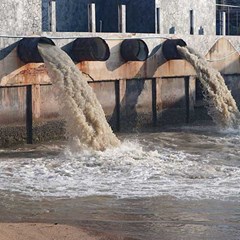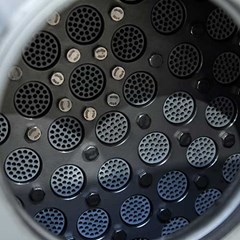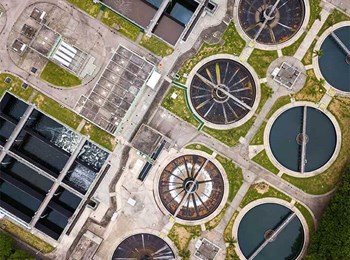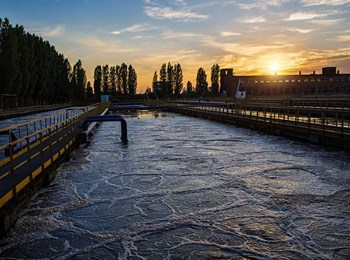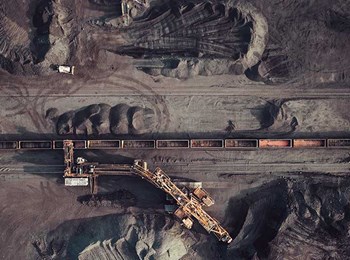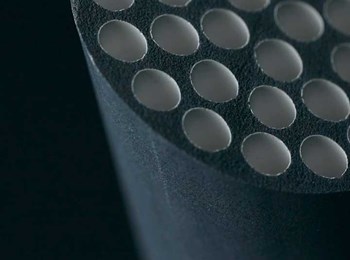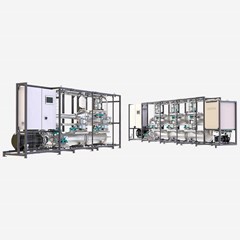There are many different types of industrial wastewater treatment methods, thus various treatment processes. These methods often involve the use of chemical treatment and/or mechanical filtration. So let us dive into these two process types.
Any industrial wastewater treatment process usually starts with an evaluation of the water and an assessment of the circumstances to define which treatment and specifications is necessary. Subsequently, the chemical and filtration processes are very different.
Chemical Industrial Wastewater Treatment
The most implemented chemical treatment processes are chemical precipitation, neutralization, adsorption, disinfection, and ion exchange. Common to these chemical water treatment processes is that you affect the substance by changing extraneous factors, for example, in the shape of injecting chemicals or changing temperatures. Subsequently, the processes differ.
In the process of chemical precipitation, dissolved inorganic is removed by adding an acid or alkali. It is done by changing the temperature or by precipitation as a solid. The precipitate can be removed by sedimentation, floatation, or other solid removal processes.
Neutralization is controlling the pH of the wastewater, whether it is acidic or alkaline, to keep the pH around 7. The lack of sufficient alkalinity will require the addition of a base to adjust the pH to the acceptable range. The lack of sufficient acidity will require the addition of an acid to adjust the pH to the acceptable range.
Adsorption is another chemical industrial wastewater treatment method. It is a physical process where soluble molecules (adsorbate) are removed by attachment to the surface of a solid substrate (adsorbent). Adsorbents must have an extremely high specific surface area. The surface of the adsorbent should be free of the adsorbate. Therefore, the adsorbent should be activated before use. A wide range of organic materials can be removed by adsorption, including detergent and toxic compounds.
Disinfection is a chemical treatment process conducted by treating the effluent with the selected disinfection to examine or at least inactivate the pathogens, such as microbes, viruses, and protozoan. The purpose of disinfection is the protection of microbial wastewater quality.
Ion exchange is a reversible reaction in which a charged ion in a solution is exchanged with a similarly charged ion, which is electrostatically attached to an immobile solid particle. The most common implementation of the ion exchange method in wastewater treatment is for softening, where polyvalent cations are exchanged with sodium. Practically, wastewater is introduced into a bed of resin. The bed is shut down when it becomes saturated with the exchanged ions, where it should be regenerated by passing a concentrated solution of sodium back through the bed.
Mechanical Filtration for Industrial Wastewater Treatment
Mechanical filtration can be done with, for example, sand filters. The sand filter technology was developed almost 200 years ago. Generally, sand filters are operated with downward-flowing fluids, and they are either driven by pressure or gravity. Shortly, a sand filter is a large tank with a thick bed of special grade sand. The dirty water is pumped into the sand filter and is led down through the sand by pressure or gravity. The sand particles retain debris, dirt, and medium-sized particles down to 10-50 microns. Sand filters may often depend on chemicals to provide adequate disinfection to remove bacteria and various pathogenic organisms.
Another mechanical filtration method is ceramic membranes. In the process of ceramic membrane filtration, the feed water enters the ceramic membranes, which are placed in housings to filter the industrial wastewater. A feed pump triggers the filtration process by generating pressure, which will make the feedwater move through the membranes. The permeate will start to move through the membrane structure as a filtered liquid which removes dirt, debris, heavy metals, oils, and particles down to 60 nanometers. The permeate will end up in a permeate tank ready to reuse or discharge. The concentrate, which is the concentrated feedwater, is sent to subsequent processing en route to filtration. In some industries, the concentrate is possible to reuse as well as the permeate. Dive further into the membrane filtration principles.
